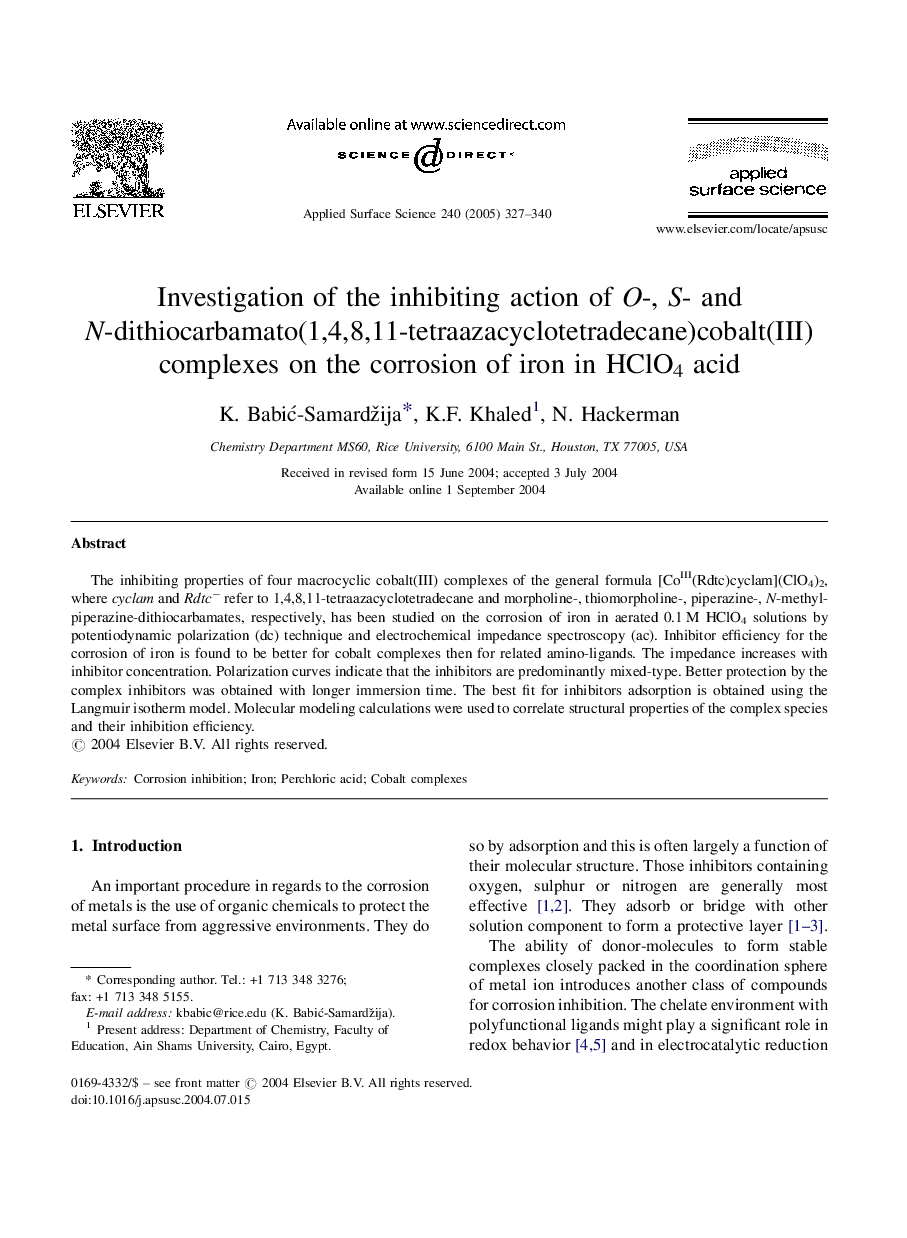| Article ID | Journal | Published Year | Pages | File Type |
|---|---|---|---|---|
| 9567653 | Applied Surface Science | 2005 | 14 Pages |
Abstract
The inhibiting properties of four macrocyclic cobalt(III) complexes of the general formula [CoIII(Rdtc)cyclam](ClO4)2, where cyclam and Rdtcâ refer to 1,4,8,11-tetraazacyclotetradecane and morpholine-, thiomorpholine-, piperazine-, N-methylpiperazine-dithiocarbamates, respectively, has been studied on the corrosion of iron in aerated 0.1Â M HClO4 solutions by potentiodynamic polarization (dc) technique and electrochemical impedance spectroscopy (ac). Inhibitor efficiency for the corrosion of iron is found to be better for cobalt complexes then for related amino-ligands. The impedance increases with inhibitor concentration. Polarization curves indicate that the inhibitors are predominantly mixed-type. Better protection by the complex inhibitors was obtained with longer immersion time. The best fit for inhibitors adsorption is obtained using the Langmuir isotherm model. Molecular modeling calculations were used to correlate structural properties of the complex species and their inhibition efficiency.
Related Topics
Physical Sciences and Engineering
Chemistry
Physical and Theoretical Chemistry
Authors
K. BabiÄ-Samardžija, K.F. Khaled, N. Hackerman,
